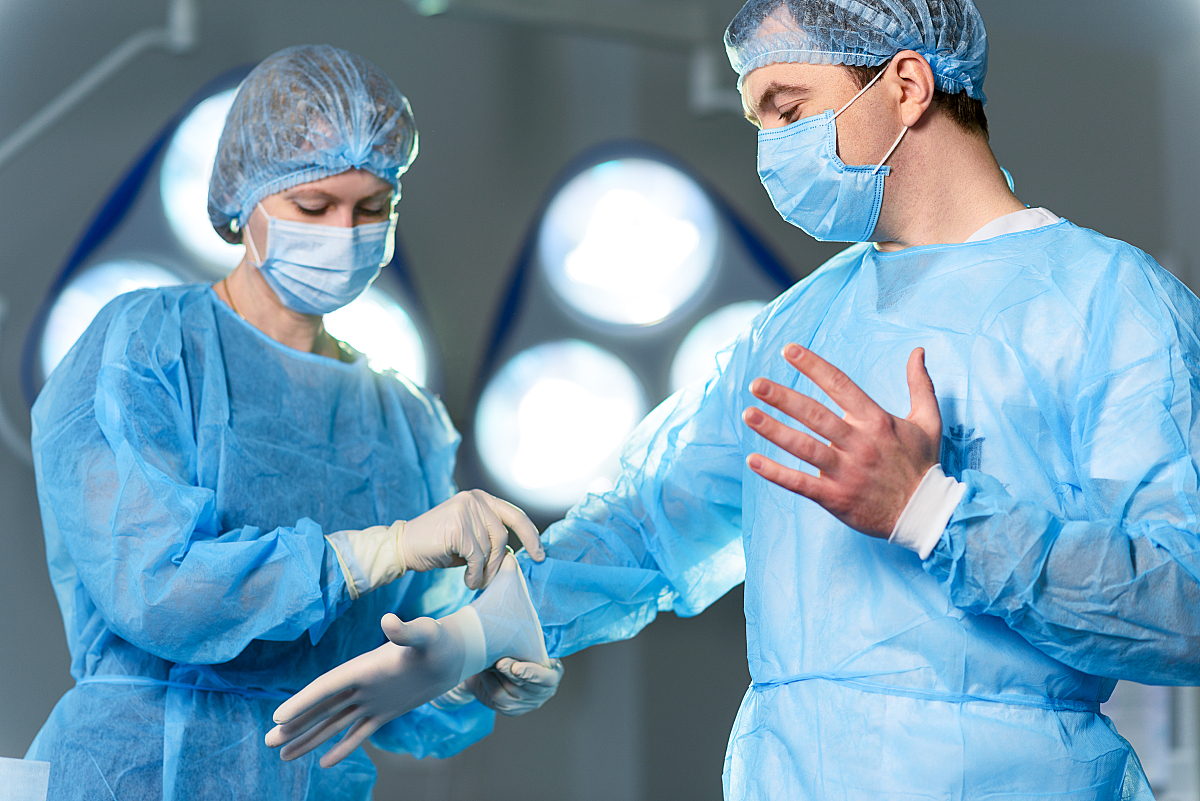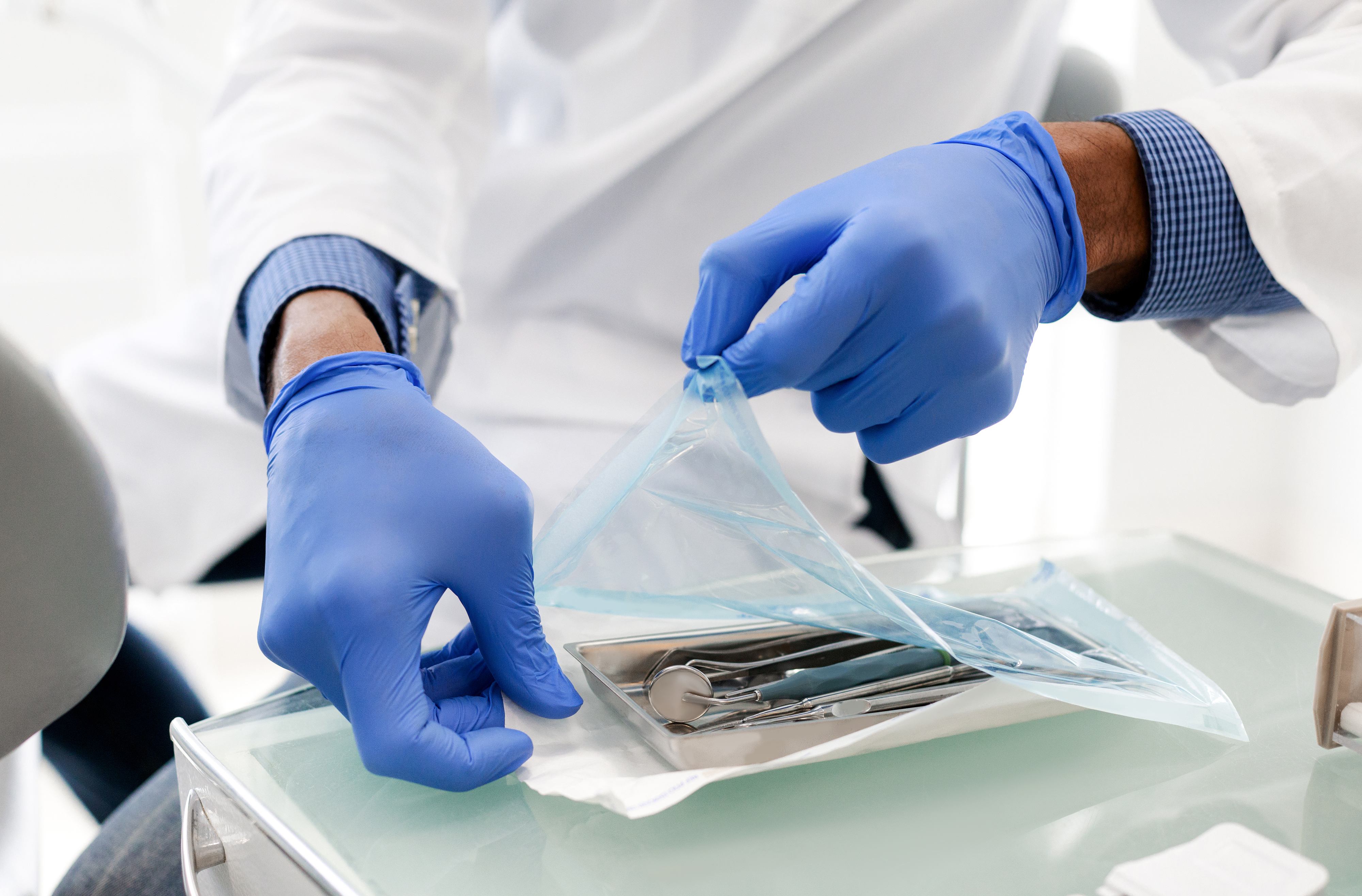Humans have been living in symbiosis with microorganisms for millions of years, and the number of microorganisms in the human body is even more than the total number of the body's own cells.
Different types of microbes parasitise the mouth, digestive tract, skin and other parts of the body, forming a diverse microbiota. Instead of endangering life, they are healthy allies of humans, helping us to better digest, degrade, defend, and strengthen our immunity ......
But not all microorganisms are beneficial to humans.
The shadow of diseases caused by microorganisms has also been haunting over the human, such as influenza A and B, the familiar flu. During surgery, when people's resistance is lowered and wounds are made due to illness, external microorganisms taking advantage of the situation may cause local abscesses or systemic infections, leading to high fever, poisoning or even endangering the patient's life. That’s why the concept of asepsis in surgery is very important.
In medical institutions, in addition to cleaning, disinfection and sterilization, the use of medical devices that have been processed through sterilization (aseptic medical devices) can minimize microorganisms in the surgical environment and surgical site, which can prevent infection to the maximum extent possible.

What is sterilization?
Sterilization is defined as ‘the process used to render a product free of any form of viable microorganisms, and the process should be validated’.
The number of viable microorganisms in a sterilization process can be expressed as a probability.
The probability is generally expressed in terms of the Sterility Assurance Level (SAL), the current standard for sterilization probability of a sterile medical device, which is defined as 10-6, i.e. one in a million.
What is a sterile medical device?
Only medical devices that have been Sterilized in accordance with the relevant standards can be called sterile medical devices. In general, the regulation of sterile medical devices refers to medical devices that have been produced and Sterilized by the manufacturer or produced using sterile processing technology, supplied in a sterile state, and can be used directly by medical units without further sterilization.
Any medical device claiming to be sterile must comply with the requirements of the relevant standards. Standards for sterile medical devices are developed by international and national standardization organizations to ensure that medical devices meet strict requirements during manufacture and sterilization.
Currently the main international standards for sterile medical devices are ISO 11135:2014 (Sterilization procedures, requirements for the environment and personnel during sterilization) and ISO 17665: -1:2006 (Requirements for methods of moist heat sterilization).
For sterile gloves, the most commonly used international standards are the European Union standard EN 455 series and the American ASTM standard, which cover the performance, safety and use of sterile gloves to ensure the effectiveness and safety of gloves in medical operations.

How to Sterilize?
For medical devices, the commonly used sterilization methods are: ethylene oxide sterilization, radiation sterilization, moist heat sterilization, dry heat sterilization, etc. Different sterilization methods are applicable to different product ranges and sterilization effects, which are generally selected according to the physical and chemical properties of the product, the form and material of the packaging, the difficulty of the process, the cost and other factors.
1. Ethylene oxide sterilization method
Ethylene oxide (E0) is a very active sterilizing agent, which has been used for hospital sterilization since the 1950s, with the characteristics of broad-spectrum, high efficiency, strong penetration and slight damage to Sterilized instruments.
Ethylene oxide kills microorganisms such as bacteria, spores, fungi, rickettsia and viruses by blocking the normal chemical reactions and metabolism of microbial proteins through alkylation.
Advantages:
● Ethylene oxide is gaseous at room temperature, with high vapour pressure
● Strong penetration and no damage to the articles.
● Widely used in the sterilization of medical device products that are sensitive to moisture and heat and are not heat-resistant, such as surgical gloves.
Disadvantages:
● Flammable and explosive, not easy to transport over long distances.
While killing microorganisms, the residues of ethylene oxide (EO) and the sterilization by-product ethyl chlorohydrin (ECH) on the instruments will bring a certain degree of toxicity to the human body, which can lead to dermatitis, haemolysis, teratogenicity and so on. Therefore, product analysis is also a very important part of ethylene oxide sterilization validation. Each country has different limits for residue, and medical devices should be manufactured and designed with different resolution schemes by choosing the most appropriate materials and sterilization processes possible.
2.Radiation Sterilization
Radiation sterilization is the use of radioisotope 60Co gamma rays, electron accelerator-generated high-energy electron beams for sterilization technology, which is applied to medical sullpies since 1950s.
Ionising radiation can act directly on macromolecules of major significance to life, such as proteins, nucleic acids, enzymes. These macromolecules produce ionisation, excitation or chemical bond breaking to cause molecular changes, resulting in cell death. Indirectly, ionising radiation acts on water molecules in the body of microorganisms, causing ionisation and excitation of water, generating free radicals, and destroying microorganisms by generating free radicals and active molecules that act as chemical corrosives to organisms.
Advantages:
●Thorough sterilization, applied to packaging and sterilization at room temperature,
●No residual toxicity and contamination
● Continuous batch operation,
● Energy saving
● Particularly suitable for sterilization of moisture-heat-sensitive materials, such as non-woven surgical gowns, latex gloves, medical dressings, etc.
Disadvantages:
● Strong γ-ray radiation can damage some irradiation intolerant polymer materials, change its mechanical properties (such as strength) or become brittle and cracked.
● A large amount of one-time investment
● High safety protection, technical operation requirements.
3. Moist heat sterilization method
Moist heat sterilization method refers to the use of saturated water vapour, boiling water or circulating steam sterilization method. It can be divided into: high-pressure steam sterilization, circulation steam sterilization, and intermittent steam sterilization, of which high-pressure steam sterilization is the most common use, sterilization effect is better.
Saturated steam (121 ℃) heat content is higher, heat penetration is larger, when contacting with the sterilization object, steam will liquefy into water, which produces a lot of heat. Under the action of intense heat and humidity, the movement of microbial protein molecules is accelerated, leading to the breakage of hydrogen bonds connecting peptide bonds, affecting the spatial arrangement of the molecular structure, causing the protein to coagulate and undergo irreversible damage, which ultimately leads to the death of microorganisms.
Pressure steam Sterilizer by increasing the pressure, so that the temperature of the saturated steam in the Sterilizer is rising, the steam penetrates into the deep part of the article to achieve the purpose of sterilization of the article.
Advantages:
● strong penetration ability
● high sterilization efficiency, suitable for heat and humidity resistant products, such as glass products, rubber products, plastic products and so on.
Disadvantages:
● high temperature and humidity may cause damage to heat and humidity sensitive products
● some highly resistant microorganisms may still have residues, in the humidity after the possibility of growing bacteria again.
4. Dry Heat Sterilization
It refers to the technology of sterilization in a dry environment (e.g. flame or dry hot air), including incineration, cauterisation, dry roasting, infrared and microwave sterilization, which is suitable for sterilization of products such as glass and metal products that are resistant to high temperatures.
Bacterial propagules in the dry state, 80 ℃ ~ 100 ℃ 1 hour can be killed;
bud cells need to be heated to 160 ℃ ~ 170 ℃ 2 hours to kill.
In order to ensure the effect of sterilization, the general provisions: 135-140 degrees Celsius sterilization 3-5h; 160-170 degrees Celsius sterilization 2-4h; 180-200 degrees Celsius sterilization 0.5-1h.
Advantages:
● rapid, reliable, simple
Disadvantages:
● The temperature used in dry heat air sterilization is generally higher than that of moist heat sterilization.




